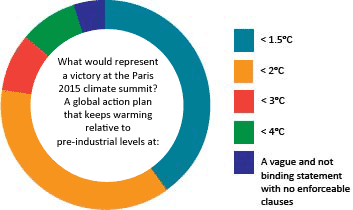December 2015 saw 195 countries sign an agreement to limit global temperature increase to 2 degrees Celsius above pre-industrial levels by the end of this century and to “pursue efforts” to remain below a 1.5-degree increase; a limit that many of the most vulnerable nations see as vital to their survival. This agreement was made at the 21st Conference of the Parties to the United Nations Framework Convention on Climate Change. It gathered the largest number of signatories of any international agreement of any kind. The event saw the largest number of heads of state assembled together under one roof and the largest number of participants since the inception of the Conferences of Parties in the Convention in 1992.
But as Christiana Figueres stated in Davos last week, getting the agreement “was the easy part.” The agreement won’t enter into force until it is officially signed by all parties at the UN headquarters in New York in April and then at least 55 countries representing 55% of global emissions must translate the agreement into national law and notify the UN. Only once these steps have been completed will the agreement come into force in 2020 and the work of translating the 160 Intended Nationally Determined Contributions representing 188 countries’ emissions reduction plans can begin. Under the agreement these national plans will be revised every 5 years with an obligation to make them more ambitious every time.
In a poll last year we asked “What would represent a victory at the Paris 2015 climate summit? A global action plan that keeps warming relative to pre-industrial levels at: <1.5°C, <2°C, <3°C, <4°C or “a vague and non-binding statement with no enforceable clauses”?
As the poll is now closed, we can reveal the results:
41% of respondents said that <1.5°C would represent a victory; 38% said <2°C would, just 9% said <3°C, 6% said <4°C and finally a pessimistic 5% said that “a vague and non-binding statement with no enforceable clauses” would be a victory for the planet.
According to the text of agreement it seems that everyone has reason to celebrate as the most ambitious target of 1.5°C was included, a statement that is particularly exciting for the 79% of respondents who wanted less than 2°C. However, depending on your analysis some might be more hesitant about pulling out the champagne just yet. According to the UNFCCC’s analysis the current collection of national emissions reduction plans limits the temperature increase to 2.7°C rise at best. Some of the more bullish critics who have analysed the plans state that even if the parties had seventy extra years to act they would still not bring temperature below a 4°C increase.
So it looks like we’re just going to have to wait and see, and keep pushing world leaders for to translate words into action on climate change.
In the meantime, take a look at these major initiatives the IES was involved in in the run-up to COP21:
-
The open letter we sent to the President of COP21 along with an alliance of more than 10,000 higher education institutions urging the conference to strengthen the role that universities and colleges play in research and education of climate action.
-
The Climate Communiqué prepared by twenty-four of the foremost academic and professional institutions in the UK asking delegates to utilise the latest scientific evidence in order to make an ambitious agreement.
-
Or the Paris Pledge for Action, which the IES signed along with 400 businesses, 120 investors and 150 cities and regions pledging to take action now to implement the agreement made in Paris.



